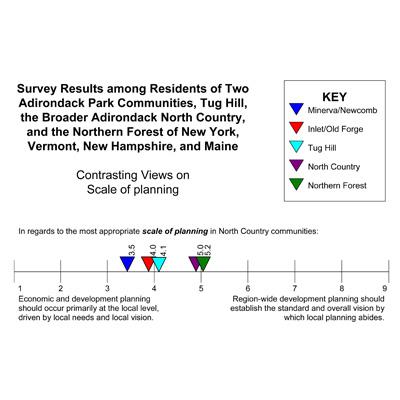Bottom-Up Strategies for Bio-Regional Policy: Designing Participatory Processes in Legislative Agenda Formation

NSRC researchers conducted discussions with communities in Tug Hill and the Adirondack Park of New York to begin exploring choices stakeholders would make if federal investment funds became available to stimulate a sustainable economic and environmental future for their community. Researchers then assessed whether local-level, “bottom-up” choices were similar to region-wide, “top-down” ones by surveying three broad groups: local communities in northern New York, North Country (northern New York) interest groups, and Northern Forest interest groups from New York, Vermont, New Hampshire, and Maine.
Respondents believed maintaining strong rural character was crucial to the future of their communities and gave high ratings to encouraging diverse local economies and protecting the environment. Opinions on the role of the forest products industry in their communities were mixed. Among five types of investment, respondents rated physical infrastructure (telecommunications, electric service, and cell phone service) at the top, followed by economy and planning capacity, environmental projects, people, and cultural projects. Though respondents agreed on many issues, there were disagreements among the three broad groups on the role of chain stores in local economies, improving centralized sewer and water services, impacts of second home development, tourism as the economic engine for the region, and promoting local agriculture.
The project used multi-criteria decision analysis, in which stakeholders consider alternative future scenarios, develop lists of criteria to help select among alternatives, and express their values and preferences as the basis for a guided, participatory discussion. Resulting information can be used to guide regional economic planning projects in northern New York and the Northern Forest region.
Download printable version [PDF]
Download full final report [PDF]
